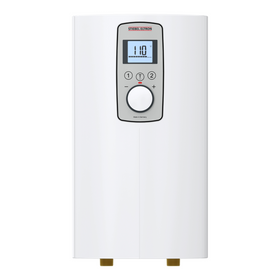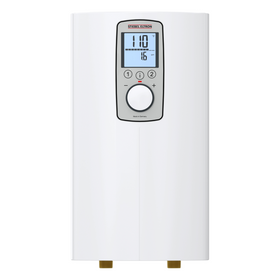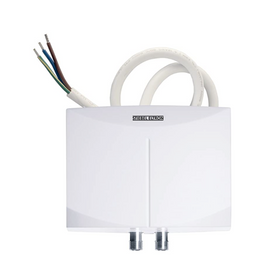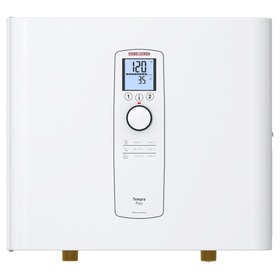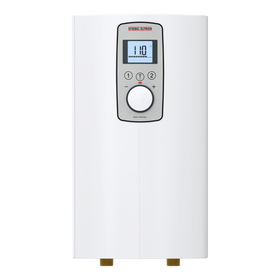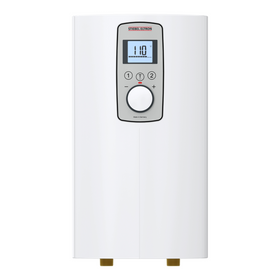
A Review of the Top Rainwater Harvesting Systems
Last Updated: Mar 17, 2025When considering the essential elements of the sustainable home, most people begin to think about renewable energy options and energy efficiency home upgrades. In the United States, the residential sector contributes almost 12 percent of all greenhouse gas emissions. These emissions, according to the Environmental Protection Agency (EPA), stem “from fossil fuels burned for heat, the use of certain products that contain greenhouse gases, and the handling of waste.” Given this reality, shifting to more energy-efficient homes that rely on solar panels and other forms of residential renewable energy technologies is a crucial element towards making our homes more sustainable and resilient.
But what about the water we use in our homes? The vast majority of homeowners across the country do not know where their potable water comes from or how it gets to their homes. As long as water comes through the faucets and showerheads whenever we turn them on, most people are content in that ignorance. Transitioning to more efficient water technologies such as dual flush toilets, low flow showerheads, and more efficient sprinkler systems is undoubtedly essential. However, taking that extra step to capture, store, and use the rainwater falling on the roof of your home should become another crucial aspect of environmentally friendly homes.
Table of Contents
- Why Rainwater Harvesting Systems are Essential
- Our Favorite Rainwater Harvesting Systems on the Market
- Rainflo Steel Tank
- Aquascape Rainwater System
- Aquamate Water Tank
- Conclusion

Why Rainwater Harvesting Systems are Essential
A 2014 study titled “The Geographic Footprint of Electricity Use for Water Services in the Western U.S.” states that the “U.S. public drinking water systems use roughly 39.2 billion kWh per year, which corresponds to about 1% of total 37 electricity use in the U.S., while municipal wastewater treatment systems use approximately 30.2 billion kWh per year or about 0.8% of total electricity use.”
The amount of energy needed to pump water from long distances into individual homes comes with an enormous energy footprint. At the same time, the amount of rainwater falling onto the roofs of our houses is more than enough water to supply our yearly needs. Unfortunately, very few homeowners have any rainwater harvesting system set up. Even fewer make use of a cistern to capture, filter, and store that water for later use.
Consider the following: Every inch of rain that falls on 1,000 square feet of impermeable surfaces, such as a roof, generates 620 gallons of potentially potable water. A 2,000 square foot home that lives in a region with 35 inches of annual rain, then, could collect over 43,000 gallons of water each year. On average, American households use around 300 gallons of water each day, or 109,000 gallons of water.
Switching to water-efficient fixtures can easily cut that number in half. With a high-quality rainwater catchment system, then, homeowners can virtually eliminate their reliance on municipal water systems, which come with an enormous energy footprint.
Last year, Rise interviewed Paul Holland, the homeowner of the Tah Mah Lah, one of America´s most sustainable homes. In that interview, Holland talked about the numerous sustainability features of his house. No element was more essential, however than his massive cistern and water catchment system. Holland told us that “by 2040 we are probably going to lose the snowpack in the Sierra (California) and that is our main water source. So, when people marvel at our 50,000-gallon water cistern, it’s not over the top. Rather, there will come a time in the future when every home in California will need to have their cistern and rainwater catchment system to deal with the loss of the snowpack in the Sierra.”
Rainwater catchment systems, then, don’t only help to reduce the environmental and carbon footprint of our homes, but can also play an essential role in making our homes more resilient and regenerative. Instead of merely allowing potable rainwater to become stormwater that contaminates local watersheds, regeneratively-designed homes find ways to utilize that water for household use and permaculture landscape design.
Our Favorite Rainwater Harvesting Systems on the Market
Innovative homeowners with some DIY construction talents could potentially build their household rainwater harvesting system. For those of us who have trouble distinguishing a hammer from a screwdriver, however, there are fortunately several commercially produced rainwater harvesting systems available for purchase. Below, we review a few of the top options currently on the market.

Rainflo Steel Tank
RainFlo 1500 Gallon Corrugated Steel Tank Rainwater Harvesting Package
This complete rainwater harvesting system comes with everything you need to get started capturing the water that falls on your roof. Due to its relatively small size (1,500 gallons), it is best for homes located in areas with steady amounts of year-round rains. Areas with extended periods of drought could experience times without water if rainfall patterns are not consistent.
The RainFlo 1500 is made from heavy-duty corrugated steel. Other components of this tank system include a geo-textile pre-liner, a durable 30 Mil non-potable PVC liner, a six-inch overflow assembly, and a two-inch outlet valve. The system costs $6,695, and free shipping is available across the country. You can also purchase several additional upgrades to the system from the same company. These upgrades include filtering systems, automatic pumps, and even a Rainwater System Controller that manages all of the functions required in a typical residential or commercial rainwater collection system.

Aquascape Rainwater System
Aquascape Rainwater Harvesting System
The Aquascape Rainwater Harvesting System comes in a unique modular design that allows for maximum flexibility for the details and needs of your rainwater collection. It comes with a filtration system pre-designed into the construction. Instead of unsightly cement or plastic storage tanks, the system is designed around a beautiful water feature that integrates into existing landscapes and stores water underground. This system can even be located underneath permeable pavement systems to capture stormwater before it runs off your property. You can read more about this revolutionary rainwater harvesting system here. Their 2,500-gallon water storage kit starts at $5,000.
Tobias Roberts
Tobias runs an agroecology farm and a natural building collective in the mountains of El Salvador. He specializes in earthen construction methods and uses permaculture design methods to integrate structures into the sustainability of the landscape.





